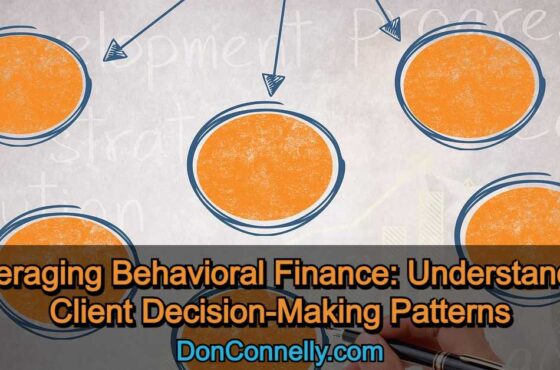Steps to Take When Ending a Client Relationship
 For everything it takes to secure a new client, it seems counterintuitive that a financial advisor would fire one. But, under certain circumstances, that’s precisely what you must do to keep your practice on the right growth trajectory while keeping your sanity.
For everything it takes to secure a new client, it seems counterintuitive that a financial advisor would fire one. But, under certain circumstances, that’s precisely what you must do to keep your practice on the right growth trajectory while keeping your sanity.
Holding on to clients who stray outside your profile of an ideal client, or when they become too demanding or no longer follow your advice, can weigh you down. Your time is too valuable to spend it with clients who aren’t a good fit for you.
So, you need to fire them. But how? Ending a client relationship is a delicate process, but it doesn’t have to be awkward for you or the client when handled with care and professionalism. Much like a structured onboarding process, you should also have a clearly defined “deboarding” process to make it easier on everyone. Here are some steps to consider when ending a client relationship.
#1. Review your client agreement and policies
Before taking any action, review the client agreement and policies to ensure it is in compliance with any contractual obligations or notice requirements.
#2. Assess the reasons for termination
Make sure you have a clear understanding of the reasons for ending the relationship. It could be due to a variety of factors, such as changes in the client’s financial situation, a mismatch in investment goals, or a breakdown in communications.
#3. Notify the client in writing
Draft a formal letter or communication to notify the client of the decision. Avoid using email. Be clear, concise, and professional in explaining the reasons for the termination. Avoid blaming or criticizing the client. Make it about you (“it’s not you, it’s me”) by letting the client know that your business model is changing and you can no longer serve them in the same capacity.
#4. Schedule a meeting
Offer to schedule a meeting or call to discuss the termination in person. Use the opportunity to address any concerns the client may have and ensure a clear understanding of the situation. It also provides the opportunity to be positive and affirming, making it clear that they should be with an advisor that makes a better fit for them, making them happier in the long run.
#5. Address outstanding issues
Resolve any outstanding issues, such as pending transactions or requests, before finalizing the termination, ensuring a smoother transition and a positive final impression.
#6. Provide transition assistance
Offer to assist the client in transitioning their accounts to another advisor or advisory firm. This may include assisting with the necessary paperwork and contact information, making an introduction, or generally facilitating the transfer process. Your goal should be to make the process as painless as possible and reassure the client they will be much happier with an advisor who’s a better match.
#7. Ensure regulatory compliance
Make sure your actions are in compliance with all relevant regulations and industry standards having to do with terminating a client relationship. Check for any required disclosures and documentation.
#8. Protect client confidentiality
Emphasize the continued importance of maintaining client confidentiality even after the relationship has ended. Ensure that all client records are handled appropriately and securely.
#9. Document the termination
Keep thorough records of the termination process, including communications with the client, the reasons for termination, and any actions taken. This documentation may be important to satisfy any future inquiries or audits.
#10. Seek legal advice if necessary
If you have any legal concerns, consider seeking legal advice to ensure the termination is conducted in accordance with applicable laws and regulations.
#11. Reflect on the experience
After terminating the client, take time to reflect on the experience, considering any lessons to be learned or improvements that can be made in client communication, service delivery, or other aspects of your advisory process.
Ending a client relationship can be difficult and awkward, especially if you’ve built a strong connection. However, it’s essential for the growth of your practice and your long-term success to maintain your focus on clients who fit your style, philosophy, and business objectives. It’s critical not to let your emotions get in the way, which is why you need to adhere to a structured process such as this.
Professionalism and open communication are key when ending a client relationship. The goal is to part ways amicably while respecting the client’s interests and complying with regulatory requirements. In the end, you’ll be happier, and so will your client.
Watch this 3-minute video to learn how our 24-step training program will help you become brilliant at the basics and take your business to the next level!
See program details and enroll today!
Available as a self-paced program (always open) or as a 12-week coaching program (open only a couple of times a year), this training will change the way you view your practice and will give you an enormous advantage over your competition. Select your format and enroll now!



